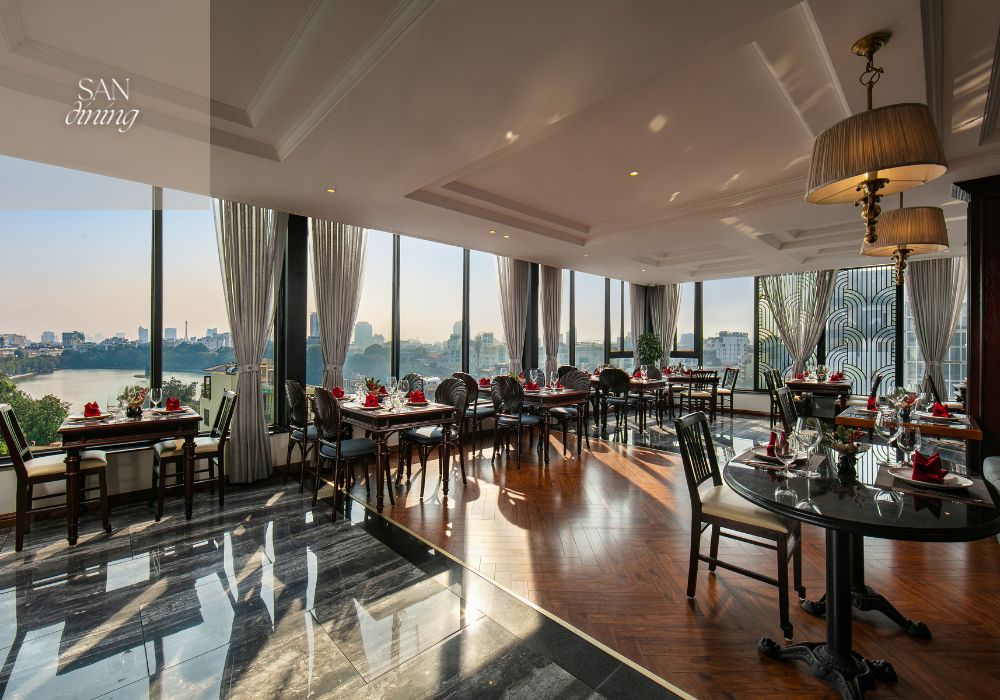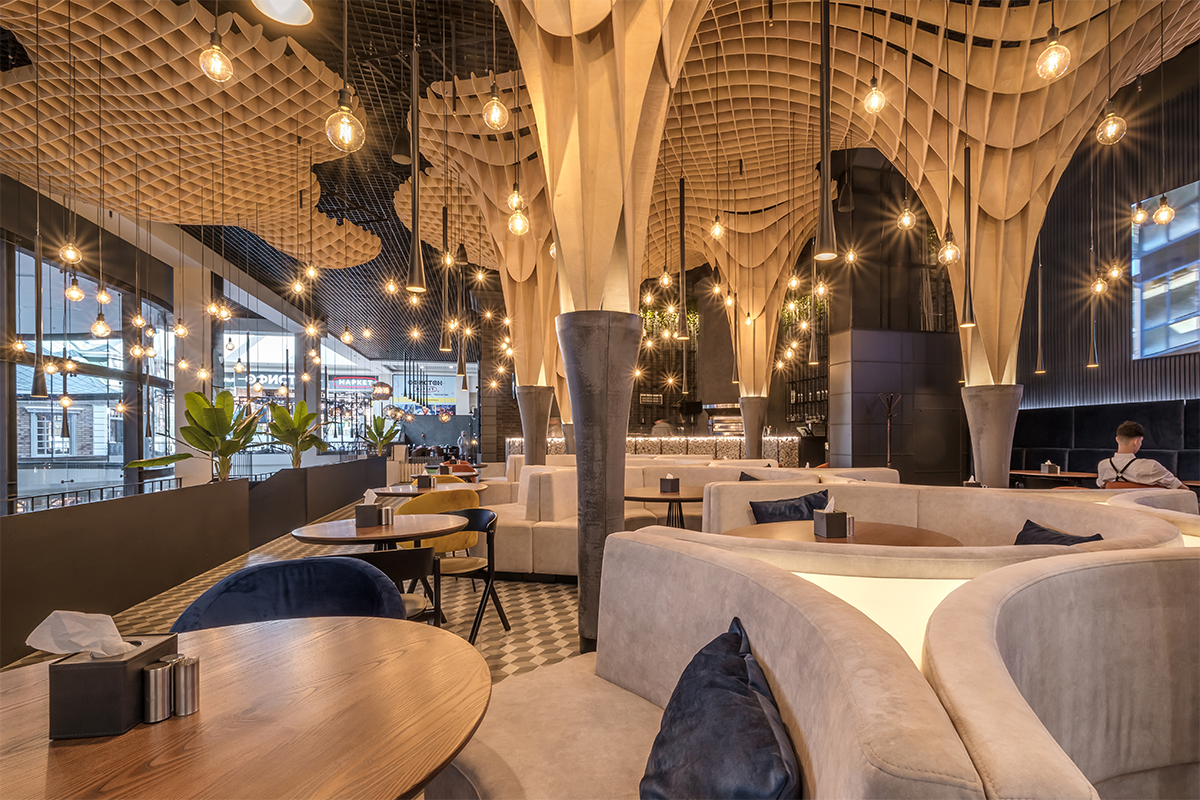Savor Genuine Asian Cuisine With a Pan-Asian Twist for a Culinary Experience
Embarking on a cooking journey through genuine Oriental cuisine, improved with a Pan-Asian twist, provides an one-of-a-kind chance to discover the rich tapestry of flavors that specify the region's varied culinary traditions. As you consider these enticing recipes, take into consideration the social stories and historical influences that form them, each bite offering a story waiting to be uncovered. Best ambiance restaurants Islamabad.

Checking Out Pan-Asian Flavors
In the realm of global gastronomy, Pan-Asian cuisine stands out for its amazing variety and the harmonious interaction of tastes from different Asian cultures. This culinary approach celebrates the special components and rich traditions found throughout the continent, creating a tapestry of tastes that is both gratifying and intriguing. Key to Pan-Asian cuisine is its ability to balance different flavors-- sweet, salted, spicy, and sour-- while highlighting the freshness and top quality of each component.
From the umami-rich soy sauce of Japan to the fiery chili peppers of Thailand, Pan-Asian cuisine offers a considerable combination of flavors. These components are usually integrated in inventive means, improving dishes with layers of complexity. For example, the usage of aromatic herbs such as lemongrass and cilantro, typical in Vietnamese and Thai cuisine, adds a rejuvenating brightness to meals, while the unification of coconut milk provides a luscious, abundant texture.
The focus on fresh fruit and vegetables and fragrant flavors makes certain that each meal is not only a banquet for the palate however likewise for the detects. Pan-Asian food welcomes restaurants to get started on a cooking journey, checking out the vast and varied landscapes of Oriental gastronomy with every bite.
Combination Dishes to Attempt
While Pan-Asian food is celebrated for its conventional tastes, the modern culinary landscape is progressively embracing combination recipes that blend these traditional components with impacts from other regions. This innovative approach not just honors the abundant heritage of Oriental cooking arts however likewise introduces unique preference experiences that attract modern tastes.
An archetype of such a blend meal is the Korean-Mexican taco, where seasoned bulgogi beef is wrapped in a cozy tortilla, covered with kimchi and a hot gochujang-infused salsa. This combination marries the vibrant, mouthwatering tastes of Korea with the vivid, fresh elements of Mexican food. In a similar way, sushi burritos have gotten popularity, amalgamating the fragile virtuosity of Japanese sushi with the passionate, hand-held comfort of a burrito, usually including fusion components like tempura shrimp and avocado with a drizzle of wasabi mayo.
Another significant meal is Thai curry ramen, which instills the velvety, fragrant seasonings of Thai curry into the soothing broth of standard Japanese ramen, developing a harmonious mix that entices the senses. These blend dishes extend beyond simple novelty; they represent a cooking discussion in between societies, encouraging expedition and innovation worldwide of Pan-Asian cuisine.
Crucial Components and Spices
To absolutely value Pan-Asian cuisine, one need to recognize the essential ingredients and spices that develop its structure. This diverse culinary design draws from a rich tapestry of Oriental traditions, using a harmonious blend of appearances and tastes.
Aromatic components are crucial, with ginger, garlic, and lemongrass being ubiquitous throughout numerous Pan-Asian dishes. These components supply a fragrant base that improves the intricacy of flavors. Seasonings such as celebrity anise, cardamom, and cinnamon present heat and character, resembling impacts from areas like China and India.

Food Preparation Strategies and Tips
Mastering the art of Pan-Asian cuisine requires knowledge with its distinctive cooking strategies, each adding to the vivid tapestry of flavors this culinary tradition is commemorated for. Central to these approaches is the stir-fry, a rapid cooking technique that protects the dietary honesty published here and vibrant shades of active ingredients. Utilizing a wok, the stir-fry technique permits for even heat distribution, essential for accomplishing the particular structure and flavor equilibrium of Pan-Asian meals.
An additional essential strategy is steaming, particularly common in Chinese cuisine. This gentle technique preserves the natural flavors and nutrients of active ingredients, making it suitable for fish and shellfish and veggies. Dumplings, a cherished staple, usually take advantage of steaming, resulting in soft, delicious structures.
Barbecuing, additionally essential, imparts smoky midsts to meals straight from the source such as Korean bulgogi or Japanese yakitori (asian fusion restaurant). This technique commonly entails seasoning components, enabling flavors to penetrate deeply before cooking over an open fire or hot plate
Lastly, grasping the art of stabilizing tastes-- wonderful, sour, salted, bitter, and umami-- is critical. Correctly layering these components can raise a recipe from ordinary to phenomenal, using a complicated and pleasing cooking experience that embodies the essence of Pan-Asian food.
Dining Experiences Worldwide
Around the world, Pan-Asian cuisine offers an unmatched eating experience, celebrated for its rich tapestry of flavors and dynamic discussions. This culinary phenomenon has actually gone beyond social boundaries, catching the hearts and tastes buds of food lovers worldwide. In cosmopolitan cities like New York, London, and Sydney, Pan-Asian dining establishments function as melting pots where cooking practices from Thailand, Japan, China, and beyond converge, giving restaurants with a diverse mix of dishes that highlight the area's diversity.
The global charm of Pan-Asian food hinges on its capability to use both credibility and technology. Cooks masterfully wed typical active ingredients such as lemongrass, soy sauce, and miso with contemporary strategies, resulting in recipes that are both familiar and refreshingly new. This fusion permits restaurants to start a culinary trip that respects heritage while accepting modernity.
Moreover, dining experiences are boosted with thoughtfully designed environments that reflect the ethos of Pan-Asian visual appeals. From minimalist Japanese-inspired insides to vibrant Thai-themed areas, each restaurant supplies a distinct setting that complements the culinary offerings. Because of this, customers are not simply taking in a dish yet partaking in a cultural experience, making Pan-Asian eating a genuinely international phenomenon.
Final Thought
The exploration of Pan-Asian official website cuisine provides a profound understanding of the intricate interplay of flavors and culinary customs across Asia. By embracing blend recipes such as Thai curry ramen and sushi burritos, the culinary trip not just highlights the flexibility of standard active ingredients yet additionally showcases innovative modern methods. This gastronomic experience, improved by crucial flavors and cooking approaches, provides an unique opportunity to appreciate the cultural diversity and culinary artistry that specify Pan-Asian food on a worldwide scale.
Beginning on a cooking journey via genuine Eastern cuisine, improved with a Pan-Asian spin, offers an unique chance to discover the rich tapestry of tastes that define the area's diverse cooking customs.In the realm of global gastronomy, Pan-Asian cuisine stands out for its amazing variety and the harmonious interaction of tastes from various Asian cultures. Trick to Pan-Asian food is its capability to stabilize different tastes-- wonderful, salted, spicy, and sour-- while highlighting the quality and quality of each active ingredient.
